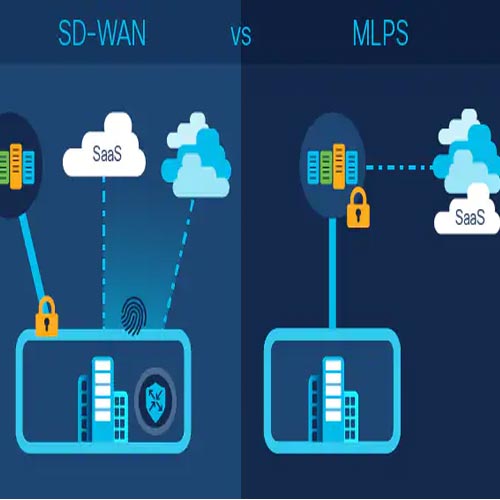
Compared to Multiprotocol Label Switching (MPLS), Software-defined Wide Area Networks (SD-WAN), which is a combination of a software-defined network (SDN) and a wide-area network (WAN) was designed to enable network administrators to respond quickly to changing business requirements via a centralized interface, which is less expensive, more secure, and provide higher performance.
MPLS can have steep bandwidth costs, while SD-WAN protects your network from vulnerabilities that MPLS cannot. SD-WAN offers businesses greater independence and flexibility in their data transport methods. This virtualized WAN allows a company to take advantage of any transport protocol, including 3G, 4G LTE, MPLS, Internet and provides a seamless on-ramp to the cloud with significant application performance especially for critical applications without sacrificing security and data privacy.
It is also true that SD-WAN is able to use existing infrastructure and augment with provided services. It works together with MPLS technology and addresses some of the limitations of MPLS. Vendors have been trying to break through for years despite claims that most of the world is moving to SD WAN, but most of the world has very definitely not.
SD WAN has so far been adopted mainly by large global enterprises with huge IT teams and large international MPLS savings to be made. The SD-WAN market is exploding alongside the growth of edge computing and digital transformation. Experts recommend SD-WAN to be integrated with SASE.
To address key challenges into security, the market for SD-WAN is undergoing rapid and dramatic changes fueled by the need for digital transformation. Today’s sophisticated users expect technology to enable real-time business decisions, facilitate workflows, boost productivity, and provide better user experiences with consistency and at scale across the enterprise. Digital transformation is quickly becoming the largest driver of new technology investments and projects among businesses. A survey says, going forward Secure Access Service Edge (SASE) will eventually replace traditional SD-WAN enterprise networks, since its cloud focus consolidates SD-WAN and network security, eliminating complexity and reducing cost.
As the Security infrastructure is evolving to support cloud-based computing, remote workers and the Internet of Things (IoT), end users should always deploy SASE with a SD-WAN foundation to deliver an optimal user experience along with security features for enterprise users. As enterprises and service providers review the latest security strategies, to deliver superior performance for SASE, customers need a tightly integrated SD-WAN to ensure that SASE services run better, faster, and more securely whether in the cloud, at the edge, or on-premises.
Emerging security services such as Zero-Trust Network Access (ZTNA) and Cloud Access Service Broker (CASB) technology need a sophisticated SD-WAN platform to understand how and where to direct traffic, to avoid costly hairpins.
See What’s Next in Tech With the Fast Forward Newsletter
Tweets From @varindiamag
Nothing to see here - yet
When they Tweet, their Tweets will show up here.





























